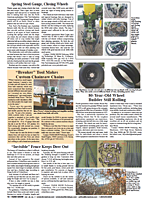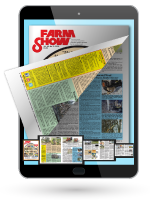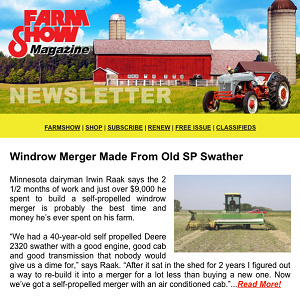You have reached your limit of 3 free stories. A story preview is shown instead.
To view more stories
(If your subscription is current,
click here to Login or Register.)
Brewery Uses Tree Sap In Beer
Many breweries are experimenting with an innovative ingredient to make their beers stand out—tree sap. It’s a strategy that’s served Scratch Brewing Company of Ava, Ill., well. The microbrewery uses ingredients foraged from forests and fields, including sap from river birch and walnut trees.
“There’s not so much
..........
You must sign in, subscribe or renew to see the page.

You must sign in, subscribe or renew to see the flip-book
Brewery Uses Tree Sap In Beer
Many breweries are experimenting with an innovative ingredient to make their beers stand out—tree sap. It’s a strategy that’s served Scratch Brewing Company of Ava, Ill., well. The microbrewery uses ingredients foraged from forests and fields, including sap from river birch and walnut trees.
“There’s not so much for us to harvest in the woods in the winter, so it’s always exciting to find something nature can give us when it’s off the traditional growing season,” says Marika Josephson, Scratch Brewing co-owner. “Tree sap is so thin before it’s cooked down to syrup; it just made sense to use it in place of water.”
Tree sap is 2% sugar by volume, making it only slightly denser than water. Still, it can boost the strength of beer by 1% ABV.
“We harvest the sap a day or two before we brew and keep it cold in our walk-in,” Josephson says. “On brew day, we’re heating the sap to about 162 degrees, the temperature you want to mash in grain. If there’s enough sap, we’ll sparge with it so that the whole beer is made with sap. From that point on, it’s brewed exactly like any other beer in our kettle with hops and/or other flavoring ingredients.”
The contributions of tree sap are subtle. Josephson clarifies that any flavor notes are easily overwhelmed by other flavors in the beer.
“People think the beers will taste like syrup, but the flavor is different. Even with syrup instead of sap, all the sugar ferments out, so there’s a unique mineral flavor instead.”
Sap contains a variety of minerals, primarily calcium and potassium, along with trace amounts of copper, phosphorus, magnesium, zinc and manganese.
“It tastes the way people often describe wines that have a minerally flavor, which makes sense because it’s what the trees are pulling up from the ground.”
“You can taste some of the other components that make those trees special. Especially with trees beside maple. Walnut sap tastes a lot like green walnuts when we’ve used it in beer,” Josephson says.
While home brewers might find tree sap intimidating, Josephson believes it’s well worth the experimentation.
“Sap is easy to swap in because all you have to do is replace a portion of the water. Just remember that it’ll also add some extra sugar and mineral components. We often opt to use sap to make a beer with a darker grain bill, like a porter or a stout, because the flavors of the sap blend well and those styles can handle a few extra gravity points.”
She recommends adding plenty of nutritional yeast to sap-brewed beers. This ensures the yeast is fully healthy and oxygenating more than it usually would. Likewise, it’s best not to tap the same tree for more than three years. Avoid any sap that has an odor or has turned brown, and aim to start the brewing process within 24 hrs. of harvesting to prevent fermentation.
Contact: FARM SHOW Followup, Scratch Brewing Company, 264 Thompson Rd., Ava, Ill. 62907 (ph 618-426-1415; info@scratchbeer.com; www.scratchbeer.com).
To read the rest of this story, download this issue below or click
here to register with your account number.





